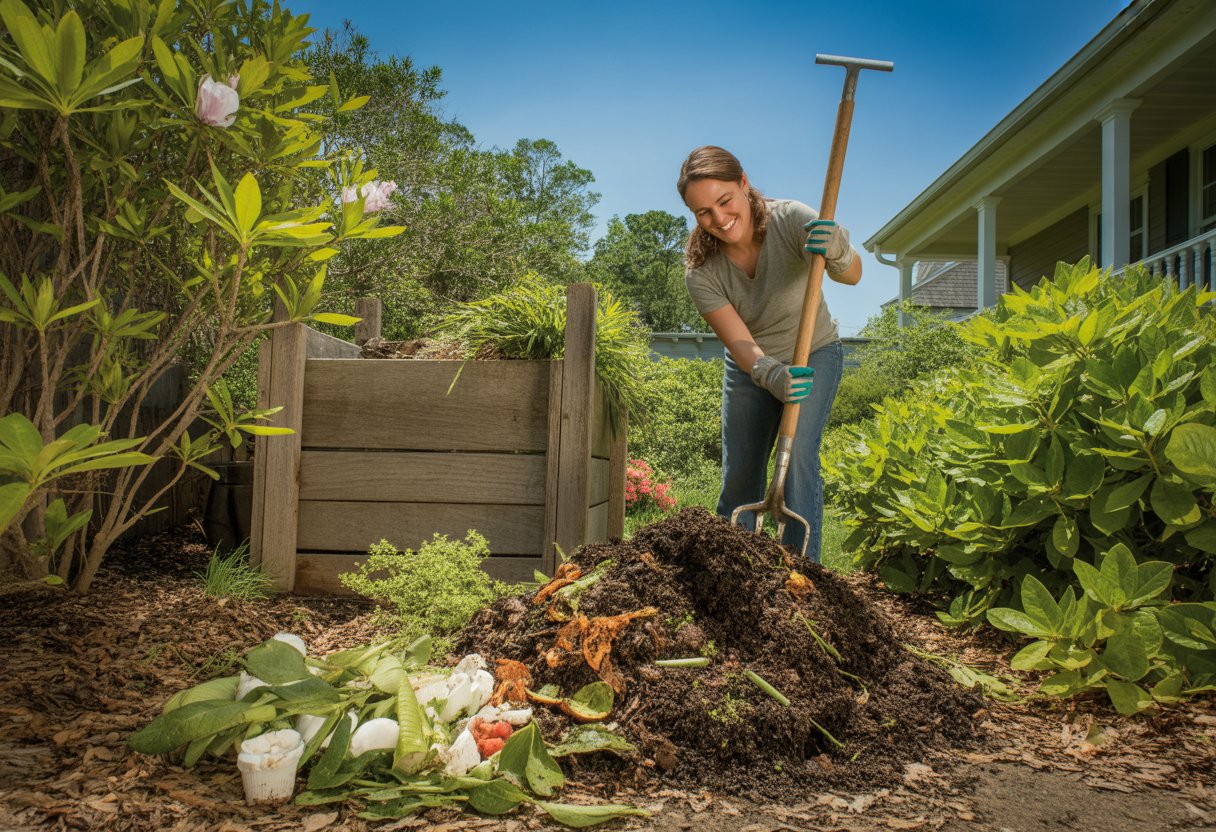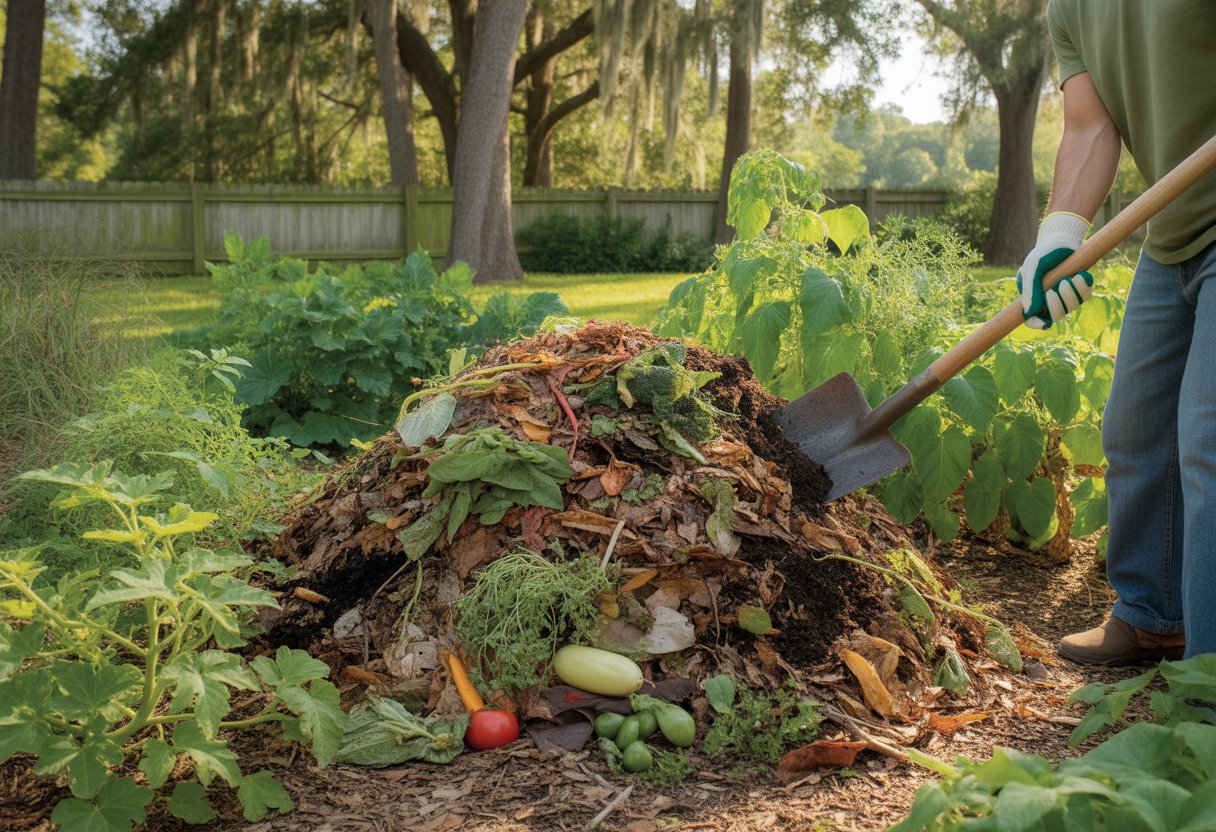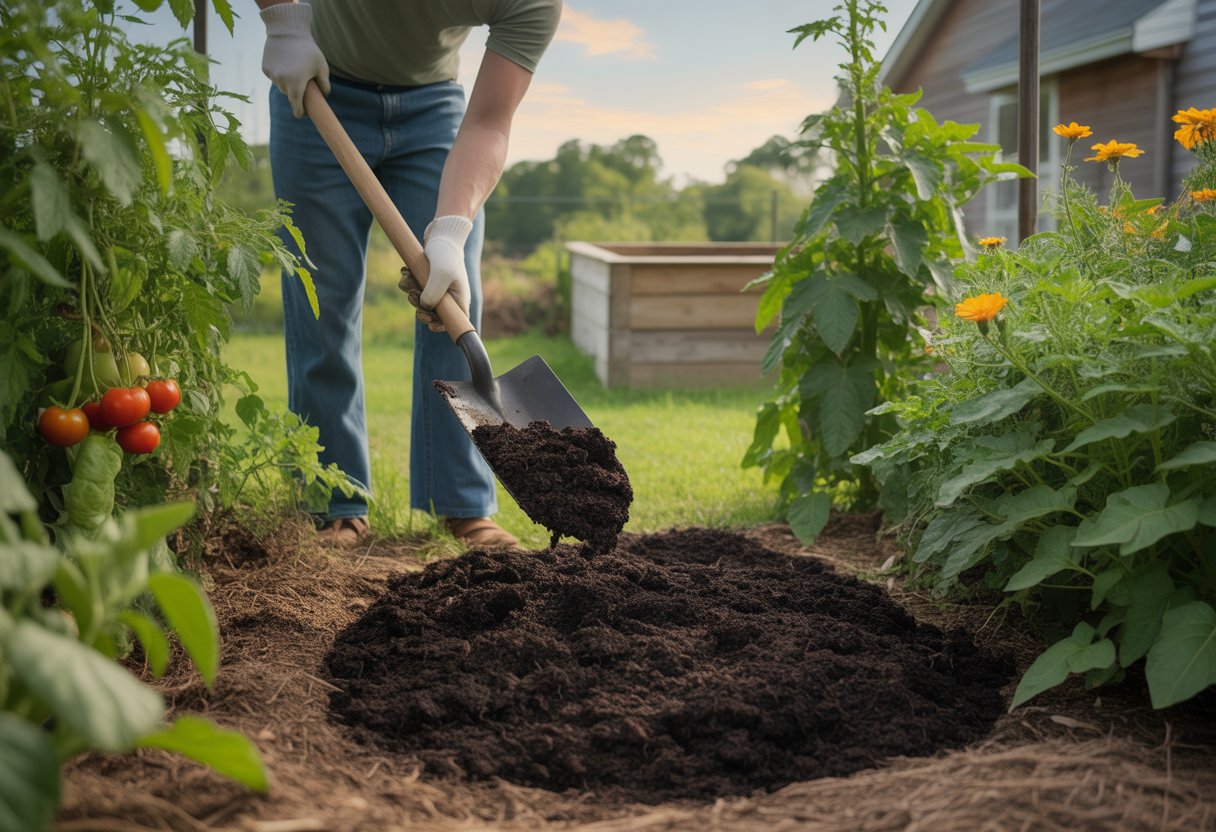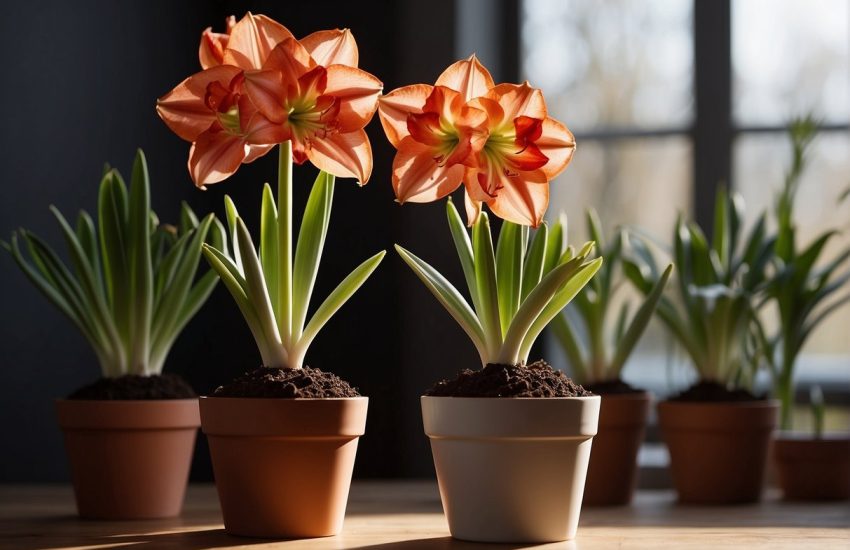Composting Tips for South Carolina Gardeners: Effective Practices for Healthy Soil and Plants
Gardening in South Carolina can be a mixed bag—hot, humid summers, sandy or clay-heavy soils, and lots of bugs. But that same climate offers some great opportunities for composting if you know how to play your cards right.
You can boost soil health and help your plants thrive by making compost that fits these conditions. Honestly, the trick to successful composting here is juggling green and brown materials and keeping an eye on moisture in our muggy weather.

Picking the right spot for your pile and turning it often can nip odor and pest problems in the bud. If you tweak your composting routine with the seasons, you’ll see better results—no question about it.
Let’s get into some practical tips for South Carolina gardeners who want to get their compost game on point.
Fundamentals of Composting in South Carolina

Composting here means paying attention to the weather and what organic stuff you’ve got on hand. The right mix of ingredients, a decent bin, and a smart location all help you get that nutrient-rich compost you want.
Understanding the Composting Process
Microbes break down organic matter as long as they’ve got heat, moisture, and oxygen. South Carolina’s warm climate speeds things up, but you’ve gotta turn the pile now and then or it’ll get stinky and bogged down.
Aim for a pile temperature between 110°F and 160°F—hot enough for microbes, not so hot it cooks everything. Squeeze a handful; it should feel like a damp sponge, not a soggy mess.
Try for a carbon-to-nitrogen ratio around 25-30:1. That keeps the microbes happy and the breakdown humming along.
Types of Compostable Materials
Most organic stuff falls into “greens” or “browns.” Greens (like kitchen scraps and fresh yard clippings) give you nitrogen, while browns (dried leaves, straw, shredded paper) bring the carbon.
Toss in fruit and veggie scraps, coffee grounds, and eggshells, but skip the meat and dairy—they’ll just attract trouble. Grass clippings and small branches add some heft and air to the pile.
Steer clear of invasive weeds or anything diseased. It’s just not worth the risk.
| Material Type | Examples | Role in Compost |
|---|---|---|
| Greens | Vegetable scraps, fresh grass | Nitrogen source |
| Browns | Dry leaves, paper, straw | Carbon source |
Compost Bin Selection and Setup
Pick a compost bin that lets air in and keeps moisture under control. You’ve got choices: plastic bins, wire cages, wooden boxes—whatever works for your space.
A 3x3x3-foot bin balances heat and makes turning manageable. Set it up in a shady, well-drained spot so it doesn’t get too hot or soggy.
Let the bottom touch soil so worms and other good critters can crawl in. Local extension offices usually have bin plans that work for our climate.
Lids keep critters out, but open bins breathe better. Turn your pile and check moisture regularly—don’t slack off if you want good compost.
Optimizing Your Compost Pile for Southern Gardens

A thriving compost pile needs the right materials, enough moisture, and plenty of air. If you keep things balanced, microbes and earthworms will do the heavy lifting.
Drainage and temperature matter a lot in our humid climate, so don’t ignore them.
Balancing Green and Brown Materials
Greens like grass clippings and fresh leaves bring nitrogen for the microbes. Browns—think fallen leaves, straw, and twigs—offer carbon and keep the pile from getting slimy.
Shoot for a carbon-to-nitrogen ratio close to 30:1. Too many greens? The pile turns soggy and stinky. Too many browns? It dries out and slows down.
Mix 2-3 parts brown to 1 part green by volume. That’s usually the sweet spot.
Managing Moisture and Drainage
Your pile should feel like a wrung-out sponge. South Carolina’s humidity means you might need to ease up on watering, or even cover the pile during heavy rain.
If things get waterlogged, the process grinds to a halt and you’ll notice a nasty smell. Toss in twigs or straw to help drain excess moisture.
Set up your pile on well-drained soil or throw down a base of coarse material. Check moisture often—don’t just guess.
Maintaining Proper Aeration and Temperature
Oxygen keeps the good microbes and worms happy. Turn your pile every week or two to get air in there and stop it from going anaerobic.
Keep the temperature between 130°F and 160°F. That’s hot enough to kill weed seeds and pathogens, but not so hot it fries everything.
Use a compost thermometer if you can. Adjust how often you turn the pile or tweak the size if things get too hot or cool.
Maximizing Nutrient Value and Compost Quality
What you put in—and how you manage your pile—determines the quality of your compost. Keep out the bad stuff and encourage beneficial life forms for a healthier end product.
Incorporating Kitchen Scraps and Common Additions
Toss in kitchen scraps like veggie peels, coffee grounds, and eggshells for a nutrient boost. Veggie scraps give nitrogen and moisture, which microbes love.
Coffee grounds are loaded with nitrogen, and eggshells (crushed up, please) add calcium. Don’t just throw them in whole—they’ll take forever to break down.
Skip meat, dairy, and oily foods. They just invite pests and make the pile reek.
Balance kitchen scraps with browns like dry leaves or shredded paper. Try to keep that carbon-to-nitrogen ratio around 25-30:1.
Encouraging Beneficial Microorganisms
Microbes and fungi are the real MVPs here. They need moisture (about 40-60%) and air to do their job.
Turn the pile every week or two. That gets oxygen to the microbes and keeps things moving.
A scoop of finished compost or garden soil jumpstarts the microbe party in a new pile. Don’t drown the pile—too much water hurts the good guys.
Keep the pile between 130-150°F for fast composting and to zap pathogens.
Preventing Weeds and Common Issues
Don’t add weed seeds—they’ll just sprout later and drive you nuts. Hot composting kills most seeds if you keep the temperature up.
Cover fresh materials with a layer of finished compost or soil to block weeds. Watch for pests; if you see them, check for food scraps or meat and dairy sneaking in.
If your pile smells rotten, odds are it’s too wet or packed down. Add some dry browns and turn it more often to freshen things up.
Applying Finished Compost in the South Carolina Garden

Finished compost does wonders for soil—better texture, more nutrients, and it holds water like a champ. How you use it depends on your soil and what you’re growing.
Best Uses for Different Soil Types
For clay soils (and we’ve got plenty), compost helps with drainage and lets roots breathe. Work in a 1-2 inch layer to the top 6-8 inches, and you’ll notice a difference.
In sandy soils, compost keeps water and nutrients from washing away. Spread 2-3 inches on top and let it work its way in over time.
It’s smart to test your soil pH after adding compost. The mild acidity can help balance out alkaline soils, which isn’t uncommon around here.
Mulching and Improving Garden Beds
Compost makes a great mulch—just spread a 2-inch layer around your plants. It keeps weeds down and helps the soil hold moisture.
Before planting, mix compost into garden beds to boost nutrients and introduce helpful microbes. Healthier soil means stronger, more resilient plants.
Don’t pile compost right up against stems; leave a little breathing room to avoid rot. Raised beds love compost, too—it improves texture and makes harvests a whole lot better.
Making and Using Compost Tea
Compost tea is basically a liquid packed with nutrients and helpful microorganisms. You make it by soaking finished compost in water for a day or two—sometimes you bubble air through it to keep things lively.
A lot of South Carolina gardeners swear by compost tea as a foliar spray or a soil drench. They say it helps plants stay healthy and tough against diseases.
If you want to avoid problems, make sure your compost is fully cured and comes from good, healthy stuff. Some folks apply compost tea every week during the growing season, hoping for better results without having to reach for chemical fertilizers.

